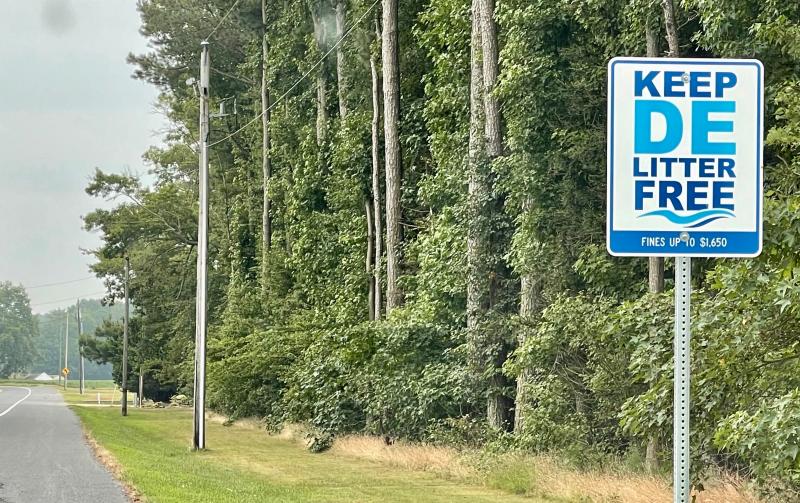Reflecting on the clean efforts of Delaware’s clean governor
John Carney is a clean guy – a clean governor. Buttoned up, smart, experienced, trim, prudent and careful. Surrounded with similar folks. A keen, analytical observer. Not loud and splashy. (Still waters run deep.) The right guy for hard times.
This isn’t campaign talk. Carney’s in his second term as governor and can’t seek a third. Just facts as I see them.
He appreciates cleanliness, and he wants his state to reflect that.
A few years ago, probably in the late winter and early spring when litter most disturbingly shows its butt against the muted grays and browns of the season, Carney expressed his dismay at the trash and litter along our state’s roads and highways. Too many cans and plastic-foam containers in the ditches and along the shoulders; too many thin plastic bags hung up in the branches of leafless trees. That’s when Carney took off the gloves and pushed hard, successfully, for the plastic bag ban that’s already improving the Delaware landscape. In this year’s General Assembly, legislators tweaked that ban to make it even tougher.
New signs have gone up along many of our roadways to keep punching out the message of a clean Delaware.
That cleanliness effort broadened and went into an even higher gear recently when Carney signed new clean water legislation. According to a state press release, that legislation “creates a new Clean Water Trust to protect Delaware waterways and rebuild Delaware’s drinking water infrastructure with a focus on underserved communities.”
The target is clean water for drinking, clean water for our outdoor activities.
Rapidly developing Sussex County needs to pay close attention so new and existing communities can help address problems affecting water supplies, not add to them.
Our Inland Bays and Broadkill River come to mind.
NRG officials recently announced plans to shut down the Indian River power plant on Burton Island. For decades, the coal-burning facility has supplied a tremendous amount of electrical power to hundreds of thousands of homes on the Delmarva Peninsula.
But that electricity came at a price beyond what consumers paid for their power. The plant long held the dubious distinction of being the single-largest source of pollution on the peninsula, with its skyscraping smokestacks a constant reminder.
In addition to pollutants rising into the air, the plant also created hundreds of thousands of tons of coal ash with the potential of polluting the Inland Bays.
NRG has invested more than half a billion dollars in recent years to renovate its operations and cut emission pollution significantly. NRG also works closely with state officials to contain potential problems with coal ash disposed of on its riverside property.
While shuttering the plant means the end of what remains of its air pollution, the coal ash will be a constant worry for years to come. The state has to monitor that disposal site carefully and consider what steps will be needed for a cleanup if a major storm were to flood the site and cause a release into Indian River.
Give Broadkill some love
Regarding Broadkill River, flowing between Milton and Roosevelt Inlet in Lewes, serious consideration needs to be given to eliminating the discharge of Milton’s treated sanitary wastewater into the river.
The Broadkill is off limits for shellfishing, in part due to that effluent. For decades in the late 1800s and early to mid-1900s, productive oyster beds in the river near the landing at Oyster Rocks Road provided a steady source of salty oysters – until they were closed due to pollution concerns.
A new wastewater treatment facility is being constructed for the town by Tidewater Utilities out on Sam Lucas Road, away from the riverside location of its existing, antiquated facility. The effluent from that facility dumps into the Broadkill, just downriver from downtown Milton.
It's expected the treated wastewater from the new plant will be higher quality than that coming out of the old plant. But that won’t eliminate the possibility that a problem in the plant could lead to a spill of less-treated wastewater into the river via the discharge pipe. Lewes had a malfunction at its wastewater plant a couple of years ago that resulted in polluted wastewater making its way into nearby marshes and the Lewes-Rehoboth Canal.
As long as there is significant state and federal infrastructure money floating around, Milton should consider getting extra funds to direct its treated effluent to Artesian’s nearby spray irrigation facility rather than continuing to risk polluting the Broadkill.
That could lead to a cleaner river and eventually make possible a return to public access for those once highly acclaimed Broadkill River oysters.
That would no doubt give our clean governor, and all the rest of us, another reason to smile.




















































